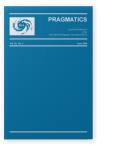Vol. 10:2 (2000) ► pp.165–193
Social/interactional functions of code switching among Dominican Americans
Linguistic assumptions of an individual speaker-hearer are subtly reflected in analyses of code switching that assign switches to “conversational strategies,” categories that are treated as if they existed prior to, and independent of, actual interactions. While such categories provide convenient rubrics for many common and significant social functions of code switching, they fail to capture the interactionally emergent functions of many switches. In this article I highlight such locally emergent functions of code switching among Dominican American high school students by examining several transcripts of intra-group, peer interaction from a conversation analytic perspective. Many switches in such peer interaction are better explained in terms of the sequential, conversational management activities achieved by interlocutors than by pre-defined categories of switches.
